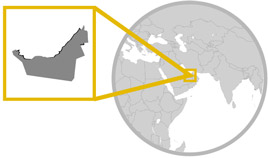Weather & Climate
Argentina sees a variety of climate types due to its large size combined with a single sea front coastline. The climate types can be broken up best into North-East, North-West, South-West, South-East and Central South regions.
The North-Eastern regions of Argentina tend to veer towards a sub-tropical weather system and in some areas, temperatures can reach as high as 35 degrees Centigrade (95 Fahrenheit) while other areas can be as cool as 0 degrees Centigrade (32 Fahrenheit). Rainfall can vary over the course of the year but tends to be very high, with the region getting as much as 1800mm of rainfall a year.
The North-West has warm weather as well and may see temperatures rising up to 35 degrees Centigrade (95 Fahrenheit) in the summer (sometimes even topping 45 degrees Centigrade or 113 Fahrenheit) and dropping as low as -8 degrees Centigrade (17.6 Fahrenheit) in the winter. Rainfall is plentiful despite the hot conditions though and up to 1200mm of rain may fall annually.
The South-Western regions have a much more arid climate and may receive less than 200mm of rainfall a year while temperatures may soar up as high as 45 degrees Centigrade (113 Fahrenheit). Conversely, temperatures in some areas (mainly at higher altitudes) may drop as low as -20 degrees Centigrade (-4 Fahrenheit) and may receive in excess of 1000mm of rain annually.
South-Eastern regions have longer summers than the other regions but can also see over 1200mm of rain annually. Temperatures are comparable to European countries, rising up as high as 32 degrees Centigrade (89.6 Fahrenheit) in the summer and dropping as low as -5 degrees Centigrade (23 Fahrenheit) in the winter.
Meanwhile in Central-South regions, temperatures are typically much colder than the rest of Argentina as one would expect, falling down sometimes as low as -35 degrees Centigrade (-31 Fahrenheit) and rarely rising up above 30 degrees Centigrade (86 Fahrenheit) even in the height of summer. Precipitation is additionally high, with up to 4000mm a year, albeit most of this falling as snow in the colder areas of the region.

